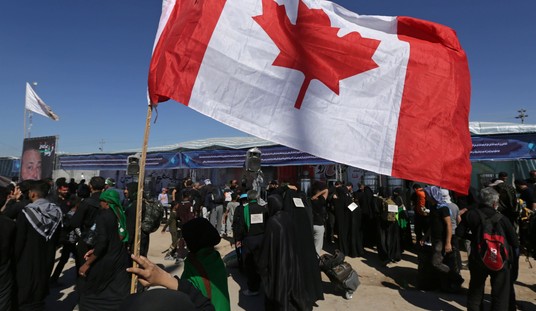Eli Lake reports today on the leak of a 268-page draft declaration to the IAEA that includes all sites of nuclear weapons related facilities. The Government Printing Office (GPO) published the dossier on its Web site by mistake last month, and although it was removed yesterday, the extent of its dissemination is unknown. Senator Kit Bond calls it a “treasure map for terrorists,” but did it contain anything not already known?
The document, which was removed from the Web on Tuesday, is a draft declaration of facilities to the International Atomic Energy Agency (IAEA), the U.N. nuclear watchdog, required under agreements that the United States signed in 2004. It is considered highly sensitive though technically not classified.
The vice chairman of the Senate Select Committee on Intelligence, Christopher S. Bond, Missouri Republican, said the disclosure revealed “a virtual treasure map for terrorists.”
A Pentagon official with knowledge of the situation said the Pentagon is “clearly concerned about the situation.”
“Any information that could be used by potential adversaries to attack infrastructure in the U.S. is of concern to us,” said the official, who spoke on the condition of anonymity because of the sensitive nature of the issue. “While much of this information is available by any number of means, one should be cautious when it is placed in the aggregate, in one source, and that creates security concerns.”
One transparency activist disagrees:
Steven Aftergood, who runs the Project on Government Secrecy for the Federation of American Scientists, praised the decision to publish the dossier. … “If you set out to compile a list of these facilities, you could do it, none of them are classified, none of them are unacknowledged, all of them have a measure of security, no one will be able to walk off the street and penetrate any of these facilities. Until we have insurrection in American cities, this information belongs in the public domain,” Mr. Aftergood said.
Still, the dossier that did get published contained more than just addresses:
David Albright, a former nuclear inspector and president of the Institute for Science and International Security, a Washington think tank, said, “It’s a mistake, and it should not have been released, especially not with ‘safeguards/confidential’ still written on it.”
“The problem is there are a few places where it shows rooms inside of buildings where fissile material is located,” he said. Although terrorists still would have difficulty penetrating U.S. security to acquire the material, he said, the disclosure was potentially a violation of U.S. law.
The release apparently came from Capitol Hill, and not the White House. The publication came through the House Foreign Affairs Committee to the GPO, which thought it had been released for publication. Bond blamed the security officer of the committee for not adequately securing the sensitive information. But shouldn’t the GPO have asked before publishing a document to the Internet marked by “safeguards/confidential”?
Releasing any sensitive information, classified or not, is rather stupid, especially on nuclear material during a time of terrorist war. Aftergood may well be correct that anyone willing to do enough research could compile a similar report. That doesn’t mean the government has to hand out that information on its websites in order to make that research unnecessary. While we certainly need more transparency in government, we have many, many places where it is more necessary than in finding out which floor of which building has the fissile material for bombs.








Join the conversation as a VIP Member